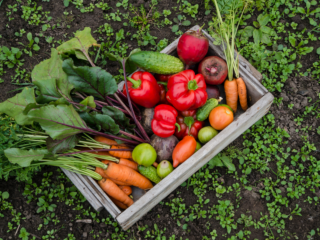
Which is Best: Raised Beds vs. In-Ground Gardens
Gardening takes a lot of work, but it really does pay off!
From flower gardens filled with blooms to small herb gardens with specialty cooking ingredients to full vegetable gardens that provide food year round, gardening is a very rewarding hobby.
If you are starting a new garden and wondering which is best, let this be your guide.
There are two types of garden beds you can create: raised bed or in ground.
Here are the pros and cons of each.

Raised Garden Bed:
Pros:
- Better Drainage: Raised beds typically have better drainage than in-ground beds, which can be beneficial in areas with heavy rainfall or clay soil, which is common in parts of Tennessee.
- Warmer Soil: Raised beds tend to warm up faster in the spring, allowing for earlier planting and extended growing seasons.
- Easier Access: Raised beds can be built at a height that is comfortable for gardening, reducing strain on the back and knees, which can be particularly advantageous for older gardeners.
- Weed Control: Raised beds can help to minimize weed growth, especially if a barrier is installed at the bottom of the bed.
- Better Soil Quality: Since you’re adding soil to the raised bed, you have more control over the quality and composition of the soil, which can lead to healthier plants.
Cons:
- Cost: Building raised beds can be more expensive initially compared to in-ground beds, especially if you opt for materials like cedar or composite lumber.
- Maintenance: Raised beds may require more maintenance, such as replenishing soil and fixing any structural issues that may arise over time.
- Limited Root Depth: Some plants, particularly those with deep root systems like carrots or potatoes, may not thrive as well in raised beds due to the limited depth of soil.
- Drying Out: Raised beds can dry out more quickly than in-ground beds, especially during hot, dry periods, necessitating more frequent watering.

In-Ground Garden Bed:
Pros:
- Lower Cost: In-ground garden beds typically require fewer materials and labor to set up initially, making them a more budget-friendly option.
- Natural Integration: In-ground beds blend seamlessly into the landscape and may be preferred for aesthetic reasons.
- Deep Root Growth: Plants with deep root systems can thrive in in-ground beds, as they have unlimited access to soil depth.
- Natural Moisture Retention: In-ground beds generally retain moisture better than raised beds, which can be advantageous during dry periods.
Cons:
- Poor Drainage: In-ground beds may suffer from poor drainage, especially in clay-heavy soils like those found in parts of Tennessee, which can lead to waterlogging and root rot.
- More Labor Intensive: In-ground beds may require more initial labor for soil preparation, including tilling and amending the soil.
- Susceptibility to Weeds: Weeds may be more prevalent in in-ground beds compared to raised beds, requiring more frequent weeding and maintenance.
- Access Issues: In-ground beds can be harder to access for planting, weeding, and harvesting, particularly for individuals with mobility issues.
Ultimately, the choice between a raised garden bed and an in-ground garden bed in Tennessee will depend on factors such as your budget, gardening preferences, soil conditions, and available space.

Wondering what to plant each month? If you’re in Tennessee’s gardening zone, you will find our monthly guides super helpful!
Looking for more?





Leave a Reply